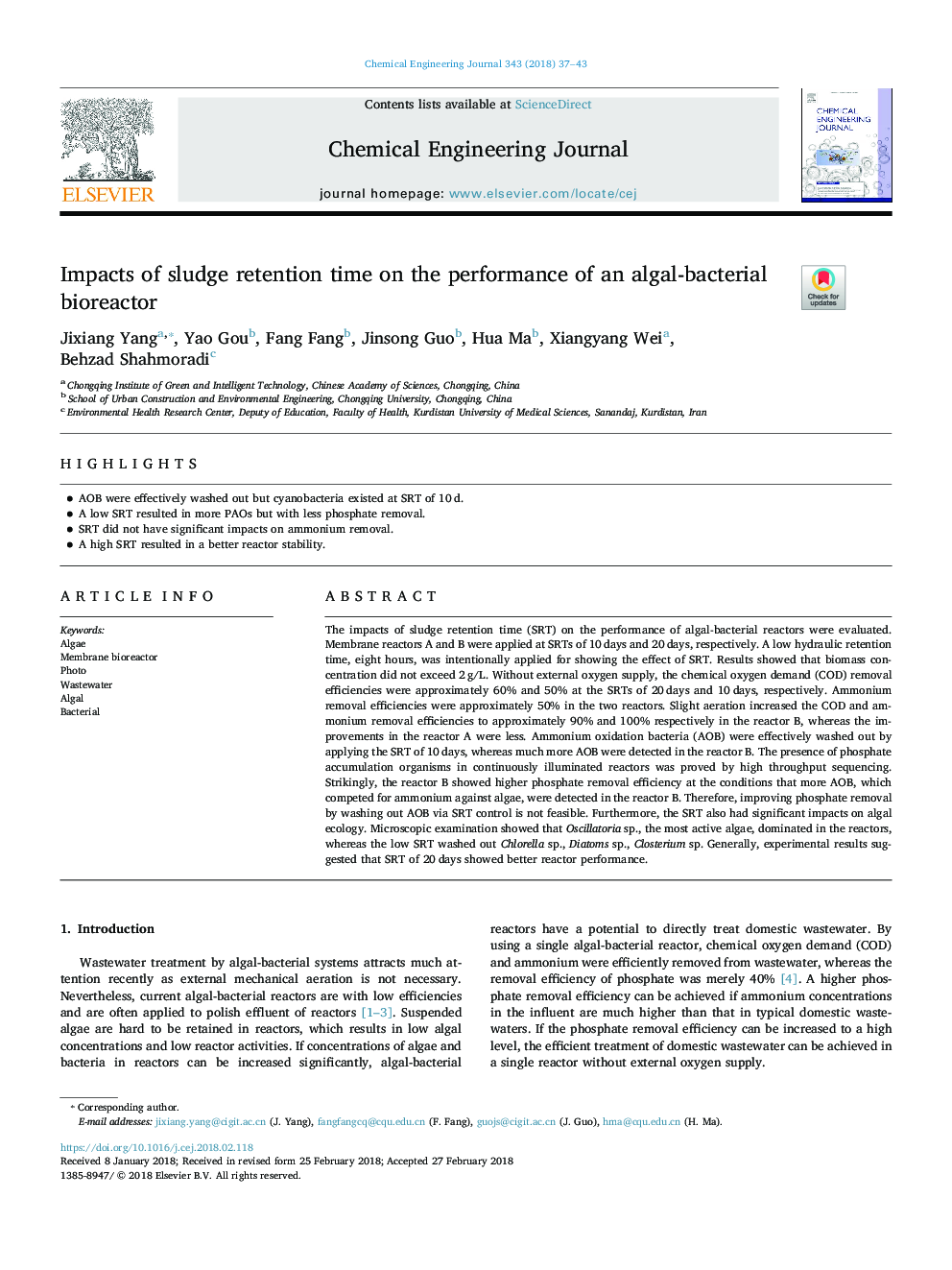| Article ID | Journal | Published Year | Pages | File Type |
|---|---|---|---|---|
| 6579605 | Chemical Engineering Journal | 2018 | 7 Pages |
Abstract
The impacts of sludge retention time (SRT) on the performance of algal-bacterial reactors were evaluated. Membrane reactors A and B were applied at SRTs of 10â¯days and 20â¯days, respectively. A low hydraulic retention time, eight hours, was intentionally applied for showing the effect of SRT. Results showed that biomass concentration did not exceed 2â¯g/L. Without external oxygen supply, the chemical oxygen demand (COD) removal efficiencies were approximately 60% and 50% at the SRTs of 20â¯days and 10â¯days, respectively. Ammonium removal efficiencies were approximately 50% in the two reactors. Slight aeration increased the COD and ammonium removal efficiencies to approximately 90% and 100% respectively in the reactor B, whereas the improvements in the reactor A were less. Ammonium oxidation bacteria (AOB) were effectively washed out by applying the SRT of 10â¯days, whereas much more AOB were detected in the reactor B. The presence of phosphate accumulation organisms in continuously illuminated reactors was proved by high throughput sequencing. Strikingly, the reactor B showed higher phosphate removal efficiency at the conditions that more AOB, which competed for ammonium against algae, were detected in the reactor B. Therefore, improving phosphate removal by washing out AOB via SRT control is not feasible. Furthermore, the SRT also had significant impacts on algal ecology. Microscopic examination showed that Oscillatoria sp., the most active algae, dominated in the reactors, whereas the low SRT washed out Chlorella sp., Diatoms sp., Closterium sp. Generally, experimental results suggested that SRT of 20â¯days showed better reactor performance.
Related Topics
Physical Sciences and Engineering
Chemical Engineering
Chemical Engineering (General)
Authors
Jixiang Yang, Yao Gou, Fang Fang, Jinsong Guo, Hua Ma, Xiangyang Wei, Behzad Shahmoradi,
